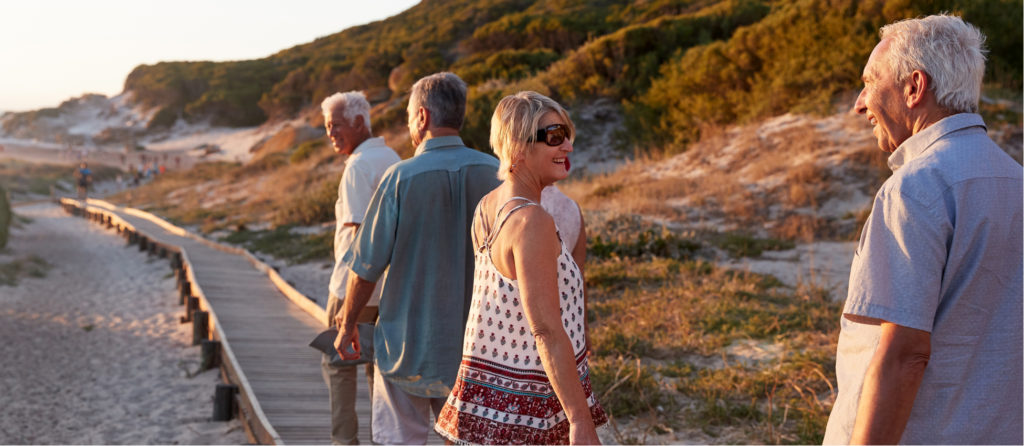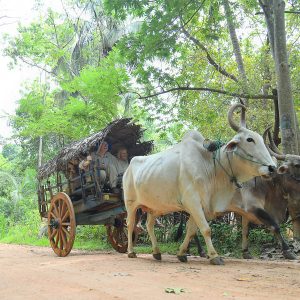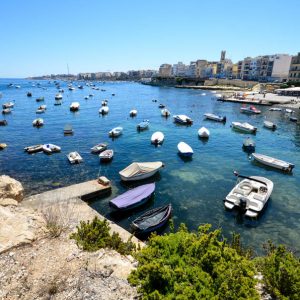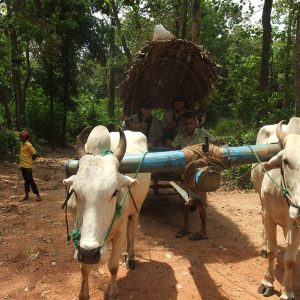Our Silver Traveller Anna Selby ventures to Mongolia on a small group tour
If ever there was a country’s whose very name brought to mind wide open, empty landscapes, that place would surely be Mongolia. Add to that picture, herds of animals, solitary yurts and soaring eagles and you surely have one of the world’s most pristine and romantic destinations. To find out for myself, I joined Intrepid’s first group to tour this beautiful country by train.
There are two Mongolias. Inner Mongolia is a part of China and so the tour actually begins in Beijing where our small group meets up – we are 11 in all and a mixed bunch of ages and nationalities, one Kiwi, one German, one Irish, six Aussies and two of us Brits. After an evening in a suitably speciality local restaurant (Peking duck is the signature dish) to get to know each other, the next morning we’re off early on our first train. This is the bullet train to Chifeng and its speed and sleekness are in stark contrast to the trains we were to experience later on the trip.
A word of warning, though. When it comes to trains, you need to build in plenty of time in China. This is not because they are unreliable – quite the reverse. It’s just that you do have to spend a lot of time going through security. All bags, including suitcases, are checked first on a scan and then by the guards who go through everything by hand. It turns out that gels and liquids all have to comply with the rules that apply on airline carry-on luggage, even if they’re in your main suitcase. There’s no checked luggage – it’s all treated in the same way. As a result, there are numerous confiscations including my husband’s shaving foam. Nothing daunted, Philip elected to grow a beard for the next ten days.
For the rest of the time in Inner Mongolia, we travelled in a very spacious and comfortable bus – a very good thing when you’re covering, as we were, a lot of ground, both literally and experientially. In Chifeng, we discovered the ancient C-shaped jade dragon, at least 5,000 years old. In Reshui, we headed into the Huanggangliang National Forest Park, set in the Xing’an Mountains and on to the Asihatu ‘Stone Forest’, a series of extraordinary rock formations carved out by two millions years of wind and rain. From Xilinhot, we visit Dali Lake, teeming with migratory birds and then head to Erlian and the Chinese/Mongolia border.
If I’d thought there was a lot of security in Beijing station, this pales in significance compared to what happens when you cross the border into Mongolia. Passports were checked, I think, five times by different officials and even taken away at one stage – thankfully, they were returned an hour later but it’s always something of a heart-in-the-mouth moment when your passport disappears down a corridor! There were police on the platform and we had to wait for an hour on the train in Zamiin-Uud, the actual border station, while all the checks were done.
I fear I do have to manage some train expectations here. The Trans-Mongolian Express isn’t much like the Orient Express. It comes from the Soviet style (and I think era) of rail travel. There are no seats, only bunks. These are four to a compartment (so you may not have previously met the people you’re sharing with) and reaching the top bunks requires a certain level of athleticism as there are no steps! You are provided with one teabag for a bedtime drink, the water coming from a wood-fired stove in the corridor. Not so very different then from the kind of train journeys enjoyed by Dr Zhivago and Lara, perhaps.
It’s 2am when we get off the train, disembarking for some inexplicable reason on to the track rather than a platform. We’ve arrived in Sainshand where we are on the edge of the Gobi Desert and we spend a couple of days here, visiting a family of camel herders and exploring the Khamriin Monastery built by the Noyon Khutagt, or Lama of the Gobi. In Mongolia, Buddhism follows the Tibetan tradition and there are dozens of prayer wheels, caves where monks meditate for 108 days at a time, temples with statues of the Buddha and a monastery where the monks chant prayers and give advice and blessings to the locals. Everywhere, sand blows in the constant wind.
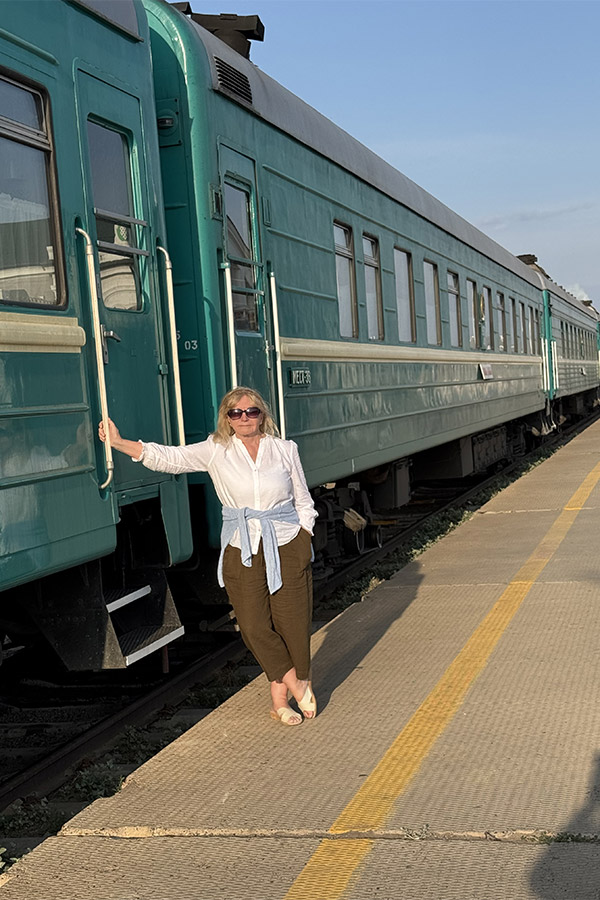
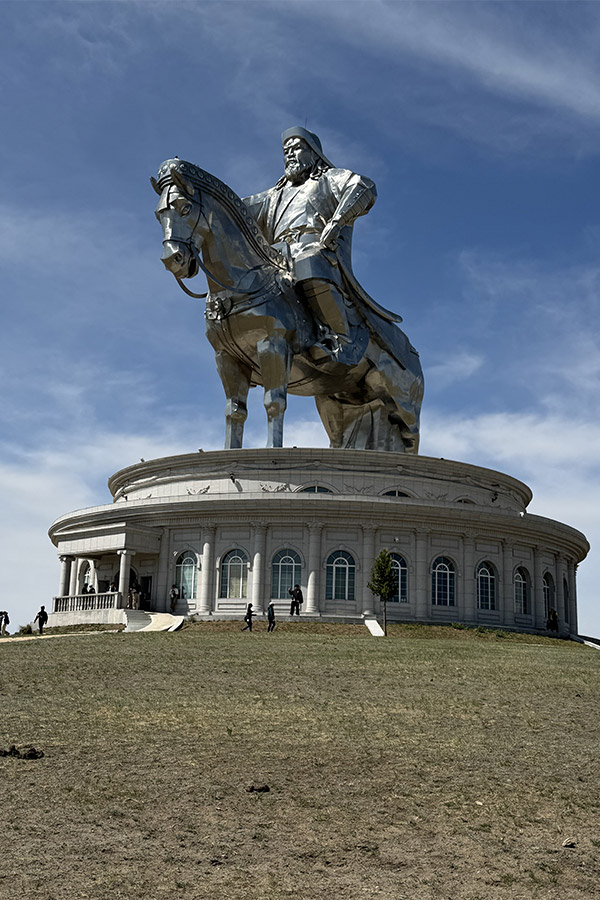
On the second night, we’re back on the Trans-Mongolian Express heading to the capital, Ulaanbaatar – but we’re not staying. We visit the world’s tallest equestrian statue (stainless steel and some 40m high) which is, not surprisingly, Chinggis Khaan, the single most important figure in the history of Mongolia. It’s not only Genghis who enjoys the view – you can climb up the horse’s back legs and emerge on to his mane so you can see far across the valley below. And then we’re off to Khustai National Park for what Mongolia is all about. We’re staying in yurts.
In fact, yurts are known in Mongolia as gers and we are staying with the welcoming Divà family who have over a thousand animals – horses, cattle, sheep and goats. The gers are a delight with comfy beds, scarlet-painted furniture, a stove (dung-fired) and golden hangings around the circular walls. The food is delicious and there are even a couple of showers. In June, all of the animals have their young and the foals, in particular, are simply a delight, cautious still on their fragile legs. In the daytime, the wind sweeps across the grasslands and raptors fill the skies while, at night, rain quietly patters on canvas. Empty and pristine? Certainly, and one of the most hauntingly beautiful landscapes imaginable.
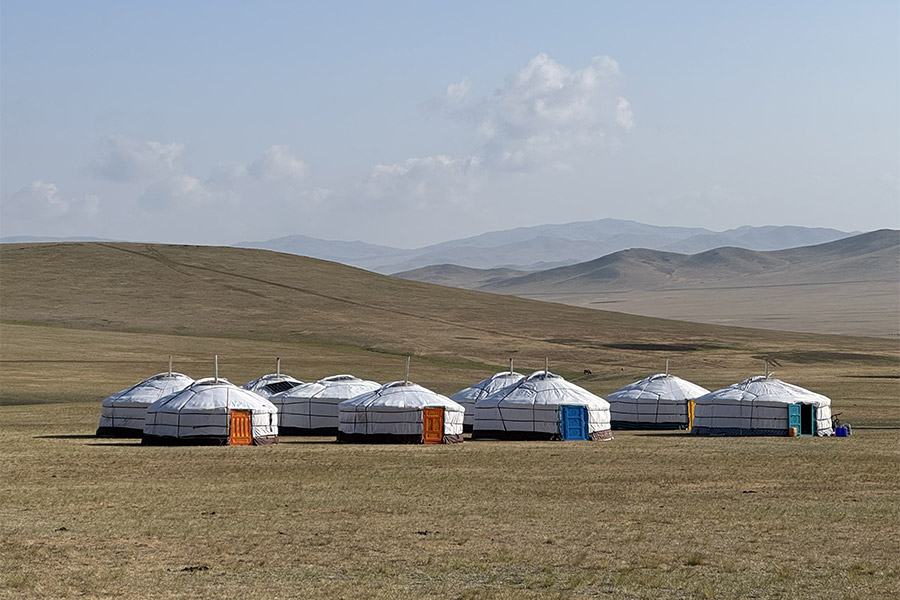
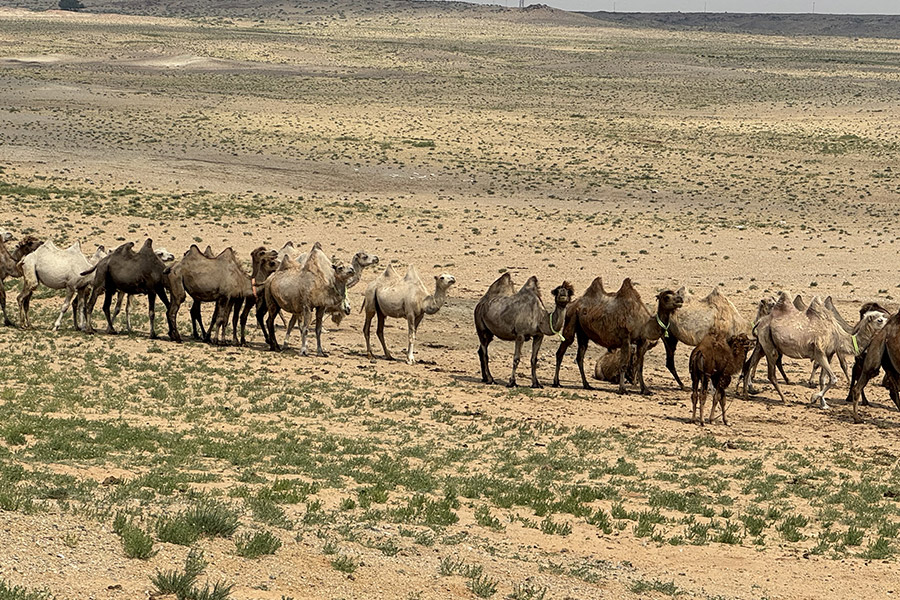
Next steps
To plan and book your adventure to Mongolia, call Silver Travel Advisor on 0800 412 5678.
